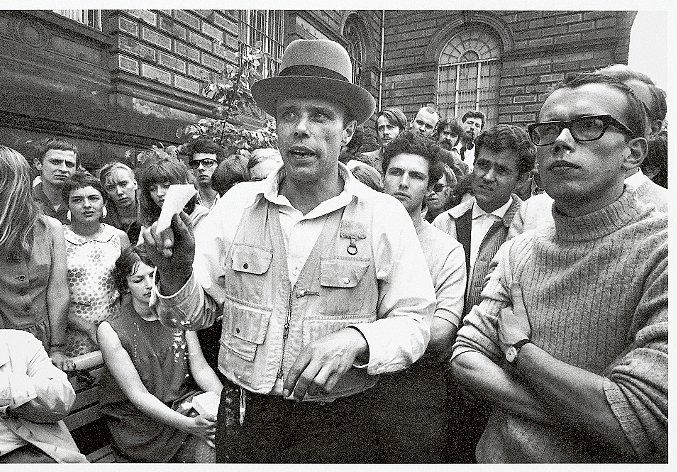CŒUR À CŒUR – Chapter IIII –
In his CŒUR À CŒUR column, Guido Brancher of GUID-O-BERLIN talks about Berlin places and happenings, in the process trying to understand and put them into a historical and time-critical context. As for the subject matter, we have given him carte blanche as we like his eclectic taste and the breath of his understanding.
Yet even Berlin is only great if you can regularly get away, so Guido will also be reporting on some of his trips.
Come along, Life is a journey!

“Everyone is an artist” – 100 years of Beuys
Joseph Beuys would have turned 100 this year. To put this birthdate in an art historical context, he was born four years after Marcel Duchamp signed a urinal and called it art !A fact that puts the « revolutionary » aspect of his « social sculptures » and happenings from the sixties, seventies and eighties into perspective. Don’t get me wrong, I still believe that Beuys is one of the most important modern personas and his œuvre is more relevant today than ever but I believe that his work evolves more about society in general than « just » art.
So what if we started to see him as one of the great German revolutionary thinkers in the tradition of Nietzsche and Marx rather than in the lineage of Picasso, Duchamp or Warhol ?
The thesis he stands for is that « Everyone is an artist » and that therefore all our actions should be considered art. Which in itself was not revolutionary because, as mentioned above, art was already tossed off its pedestal in 1917 and anyone can do a Duchamp and declare a banal object a work of art. No « Everyone is an artist » means that we have to reflect on our actions before we act and in that reflection we have to apply the highest grade of sustainability…which Is art !
Because art is what a civilisation values most. It’s what we leave to posterity. Just ask the stone-age guy (or girl) who painted the caves they housed in. Art is what connects us all, links us to past generations and separates us from the animals. Art is therefore the core expression of humanity. So if everybody is an artist it implies that we put the responsibility for future generations at the top of our values and that our actions always need to be sustainable.
Is it any wonder that Beuys was the co-founder of the Green Party ? See there you go !

7000 oaks
And if we look at Beuys as a philosopher it doesn’t matter anymore if we understand the deeper meaning of a pile of lard in a corner or a piano covered in felt. Frankly, I don’t think he wanted us to understand. His œuvre is how he tells his very personal story and he puts it out there for the public to discuss. A discussion that was highly necessary in the post war years in Germany with former Nazis still lurking around up to the highest offices in government.
It’s the process of discussion that interested him, not the comprehension. That’s why his explanations of his art were so vague, sometimes to the point of confusing.

His most relevant (and most understandable) work, in my opinion is the planting of 7000 oak trees for documenta7 in 1982. For me it epitomizes in very simple therms what he asks of us, namely to repay the planet for what we destroyed.
Today we call that « carbon-balance ».
He also called upon his fellow artists (which is all of us) to find an alternative to the two block system. Communism revealed itself as oppressive and capitalism with its perpetual need for growth cannot work in the long run because the planet we live on is finite.
We must find this third way or we will perish and it takes the creativity of an artist to come up with the concept.
Go Joe!
Photo: Action artist Beuys: “7000 oaks” at documenta 7 1982
*GUID-O-BERLIN creates memories. We offer a selection of personalised tours and encounters in and around Berlin, thereby helping you go off the beaten tourist track and explore other European cities too.
Header Photo: Joseph Beuys, 7000 oaks. City deforestation instead of city administration (1982-1987) Photo: Udo Reuschling.
